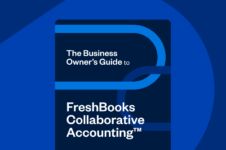Recurring invoices have many benefits, such as improved cash flow and streamlined payment procedures.

Having a steady stream of monthly income can be a godsend, especially in months where business is slow. It’s no surprise that an increasing number of small businesses realize the power of recurring invoices: Invoices you send automatically on a regular schedule.
But sending regular invoices is not suitable for everyone. By the end of this post, you’ll know whether using a recurring invoice system is for you and what you stand to gain.
Table of Contents
Benefits of Recurring Invoices
There are many advantages of sending recurring invoices or utilizing a recurring billing model with an accounting solution like FreshBooks. Here are seven compelling benefits:
1. Improves Cash Flow
Recurring invoices contribute to a steady stream of monthly income. They improve your cash flow from month to month so that you have enough money to cover your expenses and business costs.
Beyond that, the practice also improves cash flow projections. Think of it this way: when you pay your monthly cellphone bill, the cell phone company knows they can bank on a certain amount of monthly income from you (and of course their millions of other customers).
2. Recurring Invoices Speed up Payment
We are all creatures of habit and accustomed to paying regular bills, such as phone, cable, and rent. By sending invoices at recurring intervals, you’ll encourage clients to lock into the same payment routine.
On top of that any top invoicing software lets you link to a client’s credit card which not only encourages prompt payment but makes it convenient to pay.
3. Reduces Time Spent Chasing Payment
Because recurring invoices and recurring billing speed up payment by effectively cultivating good habits, you will spend a lot less time chasing payments. No more worrying about those awkward “where’s my check?” conversations!
Your clients will also benefit: They don’t have to remember to make a payment and won’t be subject to any possible late payment fees.
We are all creatures of habit and accustomed to paying regular bills, such as phone, cable, and rent. By sending invoices at recurring intervals, you’ll encourage clients to lock into the same payment routine.
4. Automates Your Payment Processes
By using online software, you can create an invoice from a template, set the schedule, link your client’s credit card and make the relevant changes once. Have peace of mind knowing that the invoice will go out on a regular schedule for prompt payment. You no longer have to duplicate unnecessary work.
Accounting software solutions like FreshBooks also allow you to review recurring invoices before sending them. It’s ideal for clients where monthly invoice values fluctuate. For example, you may have a recurring invoice for $200, but in one month you do more work and need to increase it to $250.
5. Improves Customer Relationships
Instead of being perceived as an “ad hoc” vendor, your client is likely to see you as part of their extended team and ongoing budget. This recurring relationship is often the basis of forming “anchor clients”.
6. Recurring Invoices Save You Time and Eliminate Other Hidden Costs
It may only feel like minutes, but minutes add up: It takes time and costs money to create, track and process each invoice. Someone needs to do the work right? Cut these unnecessary costs by implementing a recurring invoice system.
7. You Can Focus on What Really Matters
By saving time you can shift your attention to other critical business areas such as marketing and sales.
There’s no doubt that there are many benefits, but do you actually need a recurring invoice system, to begin with?
Determining Whether Recurring Invoices is Suitable for Your Business
Some businesses are ideal candidates for a recurring billing system, and others aren’t. Consider these examples of suitable companies and ask yourself: “Am I one of them”:
- Service-based businesses that bill for a fixed number of monthly working hours.
- Companies providing monthly service packages. For example, an agency that provides four blogs posts and a weekly newsletter to a client.
- Businesses offering maintenance plans for products. For example, a digital signage company that installs a network of screens and software for their customers. To sustain optimal uptime of the system, they would need to provide monthly support. Or what about a company that provides a garden service where they attend to someone’s garden on a weekly basis?
- Businesses offering education and training material. Companies are providing access to online resources and training material. LinkedIn already does this through LinkedIn Learning.
- Membership sites. Many smaller companies also provide access to a closed group for a monthly fee. For example, consider Carol Tice’s Freelance Writer Den which is a treasure trove of resources for freelance writers.
- Software providers that charge a monthly license fee to use their products.
You may be thinking, “What if I am a suitable candidate, but operate a seasonal business and/or want to take a vacation?” You’d be happy to know that if you use the right software such as FreshBooks, you can pause a recurring invoice campaign, and restart it when you return. It’s as simple as that.
Even if you aren’t a candidate for a recurring billing system, there’s no reason why you can’t shift gears. Start targeting subscription-based clients by altering your product offering, but be cognizant that it’s not something you can change overnight.
In this post, we’ve covered it all: the benefits of recurring invoices and whether they’re suitable for your business.
Now, the big question:
Are You Ready to Start Using Recurring Invoices?
With FreshBooks setting up recurring invoices is a breeze. Just enable the function when creating a new invoice and you’re good to go. Save time, money, and watch your bank balance grow without having to chase clients for payment. Sign up for a free 30-day trial to experience these benefits and many others.
How to Create an Invoice on FreshBooks (VIDEO)
This post was updated in October 2021.
Written by Nick Darlington, Freelance Contributor
Posted on September 1, 2017

 Accepting Online Payments Will Help You Scale Faster, Smarter
Accepting Online Payments Will Help You Scale Faster, Smarter How to Create an Error-Free Invoice
How to Create an Error-Free Invoice 10 Advanced Invoicing Tips to Get Paid Even Faster
10 Advanced Invoicing Tips to Get Paid Even Faster




